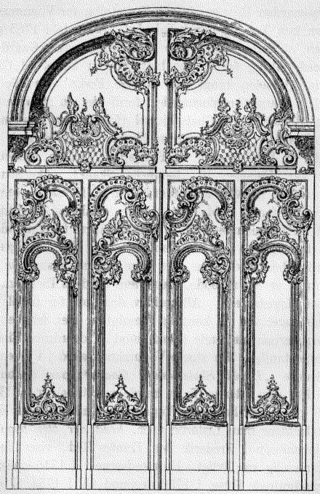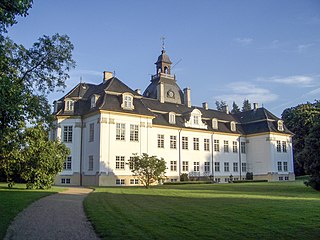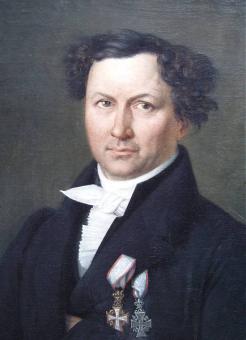
Odense is the third largest city in Denmark and the largest city on the island of Funen. As of 1 January 2022, the city proper had a population of 180,863 while Odense Municipality had a population of 205,978, making it the fourth largest municipality in Denmark. Eurostat and OECD have used a definition for the Metropolitan area of Odense, which includes all municipalities in the Province of Funen, with a total population of 504,066 as of 1 July 2022

Fyns Amt is a former county in central Denmark, comprising the islands of Funen, Langeland, Tåsinge, Ærø, and approximately 90 other islands, of which only 25 are inhabited. The county was formed on 1 April 1970, comprising the former counties of Odense and Svendborg. The county was abolished from 1 January 2007, when it merged into Region Syddanmark.

Christian III reigned as King of Denmark from 1534 and King of Norway from 1537 until his death in 1559. During his reign, Christian formed close ties between the church and the crown. He established Lutheranism as the state religion within his realms as part of the Protestant Reformation.

Amalienborg is the home of the Danish royal family, and is located in Copenhagen, Denmark. It consists of four identical classical palace façades with rococo interiors around an octagonal courtyard ; in the centre of the square is a monumental equestrian statue of Amalienborg's founder, King Frederick V.

Hans Tausen (Tavsen) was the leading Lutheran theologian of the Danish Reformation in Denmark. He served as Bishop of Ribe and published the first translation of the Pentateuch into Danish in 1535.

Frederiksberg Palace is a Baroque residence, located in Frederiksberg, Denmark, adjacent to the Copenhagen Zoo. It commands an impressive view over Frederiksberg Gardens, originally designed as a palace garden in the Baroque style. Constructed and extended from 1699 to 1735, the palace served as the royal family’s summer residence until the mid-19th century. Since 1869, it has housed the Royal Danish Military Academy.

Frederiksberg Gardens is one of the largest and most attractive greenspaces in Copenhagen, Denmark. Together with the adjacent Søndermarken it forms a green area of 64 hectares at the western edge of Inner Copenhagen. It is a romantic landscape garden designed in the English style.

Nicolai Eigtved, also known as Niels Eigtved was a Danish architect. He introduced and was the leading proponent of the French rococo or late baroque style in Danish architecture during the 1730s–1740s. He designed and built some of the most prominent buildings of his time, a number of which still stand to this day. He also played an important role in the establishment of the Royal Danish Academy of Art, and was its first native-born leader.

Charlottenlund Palace is a former royal summer residence in Charlottenlund, some 10 km (6 mi) north of central Copenhagen, Denmark. The palace was named after Princess Charlotte Amalie, who was responsible for the construction of the original palace. It was later extended and adapted for Crown Prince Frederick VIII to a design by Ferdinand Meldahl in the early 1880s.

The former Diocese of Odense was a Roman Catholic diocese in Denmark which included the islands of Funen, Langeland, Tåsinge, Lolland, Falster, Als, and Ærø. Its episcopal see was located in Odense at St. Canute's Cathedral.

The architecture of Denmark has its origins in the Viking period, richly revealed by archaeological finds. It became firmly established in the Middle Ages when first Romanesque, then Gothic churches and cathedrals sprang up throughout the country. It was during this period that, in a country with little access to stone, brick became the construction material of choice, not just for churches but also for fortifications and castles.

Essenbæk Abbey was a Benedictine monastery located in Essenbæk Parish eight kilometers east of Randers and 1.7 kilometers north of Assentoft, Denmark.

Amaliegade is a street in central Copenhagen, Denmark, which makes up the longer of the two axes on which the Rococo district Frederiksstaden is centred. Amaliegade extends from Sankt Annæ Plads to Esplanaden, passing through the central plaza of Amalienborg Palace on the way where it intersects Frederiksgade, the other, shorter but more prominent, axis of the district.

Jørgen Hansen Koch was a Neoclassical Danish architect. He was chief of the national Danish building administration from 1835 and director of the Royal Danish Academy of Fine Arts from 1844 to 1849.
Prince Christian of Hesse was a German prince and member of the House of Hesse-Kassel. As a son of the Danish Field Marshal Prince Charles of Hesse-Kassel and Princess Louise of Denmark, he was a member of the extended Danish Royal Family and spent his entire life in Denmark.

The Moltke's Mansion is a town mansion on the corner of Bredgade and Dronningens Tværgade in Copenhagen, Denmark. It is one of several town mansions in Frederiksstaden, although it actually predates the neighbourhood by half a century. It was built for Ulrik Frederik Gyldenløve between 1700 and 1702 and was originally known as Gyldenløve's Little Mansion. It received its current name in 1842, after it was acquired by Adam Wilhelm Moltke, the first Danish Prime Minister under the Danish constitutional monarchy.

The Prince's Mansion is a palatial Rococo-style mansion located at Frederiksholms Kanal in central Copenhagen, Denmark. It used to serve as the official residence of the Crown Prince of Denmark but now houses the National Museum of Denmark.

Aksel Christian Henrik Hansen was a Danish sculptor, one of the most productive of his times.

Aalholm, also Aalholm Castle, is a castle and country estate in Nysted in the municipality of Guldborgsund, on the south coast of the island of Lolland, Denmark. It is the oldest castle on the island, first mentioned in 1329. The main building was built in 1300–1585, with major rebuilding especially in 1768 and in 1889 under Hans Jørgen Holm and Gotfred Tvede. Inscriptions in the building show that it was originally completed in 1585.
Wermund Bendtsen (1917–2003) was a Danish professional photographer, filmmaker and photojournalist active in Odense from the 1940s to the 1980s.



















